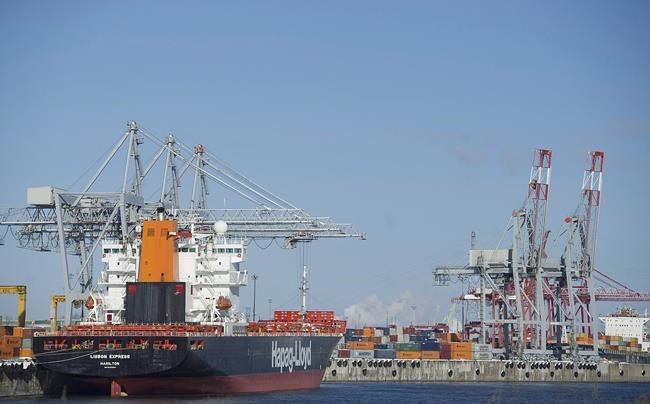MONTREAL ÔÇö The non-profit authority overseeing the St. Lawrence Seaway says cargo numbers nudged up last year despite a weak grain crop as manufacturing and construction demand came roaring back.
Grain transport fell 20 per cent year over year to 10.6 million tonnes in 2021 following a smaller crop and drought conditions across Western sa╣·╝╩┤½├¢ and the American Midwest, though the figure aligns with the five-year average, the St. Lawrence Seaway Management Corp. said Wednesday in a release.
The body said shipments of iron ore, steel slabs and aluminum rebounded after a tough 2020 as the automotive and construction sectors revved up throughout the navigation season, which stretched from March 12 to Jan. 10 of this year.
Oil and chemical products rose about five per cent following lower numbers in the first year of the COVID-19 pandemic, and stone, cement, potash also enjoyed a boost. Excluding grain, overall tonnage was up 13 per cent, the corporation said.
Chamber of Marine Commerce CEO Bruce Burrows says the St. Lawrence Seaway has been largely immune to the supply chain problems plaguing global transport, since the most affected areas involve container traffic, which makes up a small proportion of shipping cargo west of Montreal.
"We were at some real lows in 2020, so '21 was definitely that year of recovery. Grain is the exception to the story," Burrows said.
About 30 per cent of Canadian grain exports leave the country via Ontario ports at Thunder Bay and Hamilton en route to Europe, Africa and the Middle East, said seaway management authority CEO Terence Bowles.
"There's been an uptick generally in manufacturing demand and construction ... demanding all sorts of base raw materials," Burrows said, pointing to the Greater Toronto Area in particular.
"And with people being close to home during the pandemic and putting money into their homes, investing in appliances ... that ultimately trickles down to demand for iron ore and of course steel. We're a big part of that success story."
The seaway, which stretches for over 300 kilometres between Montreal and Lake Erie, saw some 38 million tonnes of freight traverse the system of locks, canals and channels in 2021, a roughly one per cent increase over the year before.
As it reported the uptick in traffic, the Chamber of Marine Commerce also called for two industry representatives ÔÇö one from sa╣·╝╩┤½├¢, one from the U.S. ÔÇö to be appointed to an international board of control to contribute to decision making on outflow levels at a cross-border dam at Cornwall, Ont.
In 2020, the seaway saw traffic delayed by 12 days after the Lake Ontario-St. Lawrence River Board opened the floodgates at the Moses-Saunders dam to reduce potential flooding in the Great Lakes, Burrows said. The rapid outflow, which causes swift, swirling currents that interrupt navigation through the nearby locks, "had little effect on lake levels but impacted more than $80 million worth of shipping business," the chamber said Wednesday.
It is also calling on provincial, state and federal governments to invest in infrastructure in order to shore up climate change resilience. The chamber also hopes for a "made in sa╣·╝╩┤½├¢ÔÇØ approach to regulations on emissions reduction from domestic ships, which are smaller and narrower than ocean freighters and call for different rules, Burrows said.
This report by The Canadian Press was first published Jan. 19, 2022.
Christopher Reynolds, The Canadian Press



